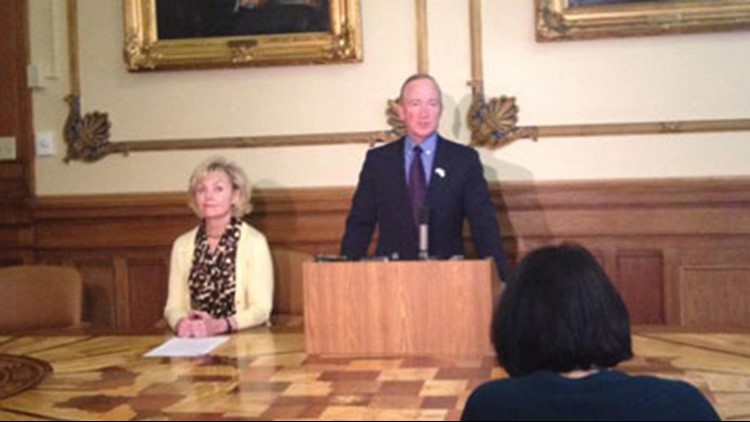Indiana Gov. Mitch Daniels announced how much money Indiana taxpayers will get back next year.
Single tax return filers will get a $111 tax credit next year and joint filers will get $222 because the state surplus went over $2 billion. Eyewitness News caught up with some shoppers Wednesday to find out what the tax credit means to them.
It is that time of year when Hoosiers are out shopping for the holidays. Valarie Konger is among them. She was picking up last minute items before Thanksgiving. Her goal is to stay within her budget.
"I think everybody wants more money. I know I do!" she said.
Konger is in luck. As a Hoosier taxpayer, she is eligible to receive a tax credit on her next tax return. Gov. Daniels outlined the important numbers Wednesday.
"If you are a filer, just subtract $111 from what you owe. If you are a joint filer just subtract $222. All you have to do," he said.
Daniels says including the credit on tax returns is simpler and less expensive than mailing out additional checks.
This is the first automatic refund in Indiana history, triggered by the state surplus reaching $2.1 billion. It all adds up.
This time of year around the holidays, we are all accustomed to the unexpected bills that crop up. But what about this time when you get an unexpected tax credit?
"I'm all for that. More money to spend. I got things at home I could always buy and of course the groceries come in handy too," said Konger.
As a single filer she stands to gain $111 of her own money. The grocery bill this time around was $67.
"That would be amazing. Awesome!" said Nishia Norfolk, who would reap the benefits of a joint return at $222. With four children to feed including one-year-old twins, that could help at Thanksgiving or Christmas.
"Or just put it aside for spring, summer plans. Four kids, we can put it up for anything at this point. We definitely can use it," she said.
During the economic downturn, Indiana is one of only a handful of states touting surpluses and the only state to implement an automatic tax refund. Now over three million Hoosiers stand to benefit from it on next year's tax returns.
The governor's office says about $360 million will go toward the tax credits, with another $360 million to the state's pension liabilities.
Critics argue that Daniels created the surplus by cutting money for public schools, the child welfare agency and other important services.
About the refund:
The Indiana General Assembly approved the plan in 2011. The refund kicks in if the state's reserves exceed ten percent at the end of the budget year, which ends on June 30. In future years, the reserve threshold will be 12.5 percent.
Indiana finished up the 2012 fiscal year with reserves of $2.155 billion, or 15 percent of the state's budget.
"We insisted on a per capita refund for two reasons: first, maximum simplicity, as seen on the new tax form. Second, to provide the most relief to lower and middle income Hoosiers, for whom $222 may be meaningful right now," said Daniels. "Past a point of rock-solid fiscal strength, it's better to leave this money in the pockets of those who earned it than to let it burn a hole, as it tends to do, in the pocket of government."
Facts about the automatic taxpayer refund:
· Approximately 3.26 million eligible Hoosier taxpayers
· Total ATR amount for individual taxpayers is $360.6 million
· Typical taxpayer liability is $850; the taxpayer refund represents a median tax cut of about 13 percent. The credit will be applied when taxpayers fill out their 2012 income tax forms in 2013.
Here is a link to how the language will appear on the form for 2012
· There are about 335,000 taxpayers who will receive a refund in 2013 who otherwise would have owed taxes without the ATR
· About 890,000 taxpayers will receive at least a 25 percent income tax reduction
· About 460,000 taxpayers will receive at least a 50 percent refund (owe $222 or less)
· About 230,000 taxpayers will receive a 100 percent refund (owe $111 or less)
The total budget surplus was $721 million. The other $360 million has been used to strengthen pension funds: Judges Pension Fund ($90.2 million); Conservation, Gaming, and Excise Officers' Pension Fund ($14.6 million); Prosecutors' Pension Fund ($17.4 million); State Police Pension Fund ($31.7 million); and Pre-1996 Teachers' Retirement Fund ($206.8 million).



